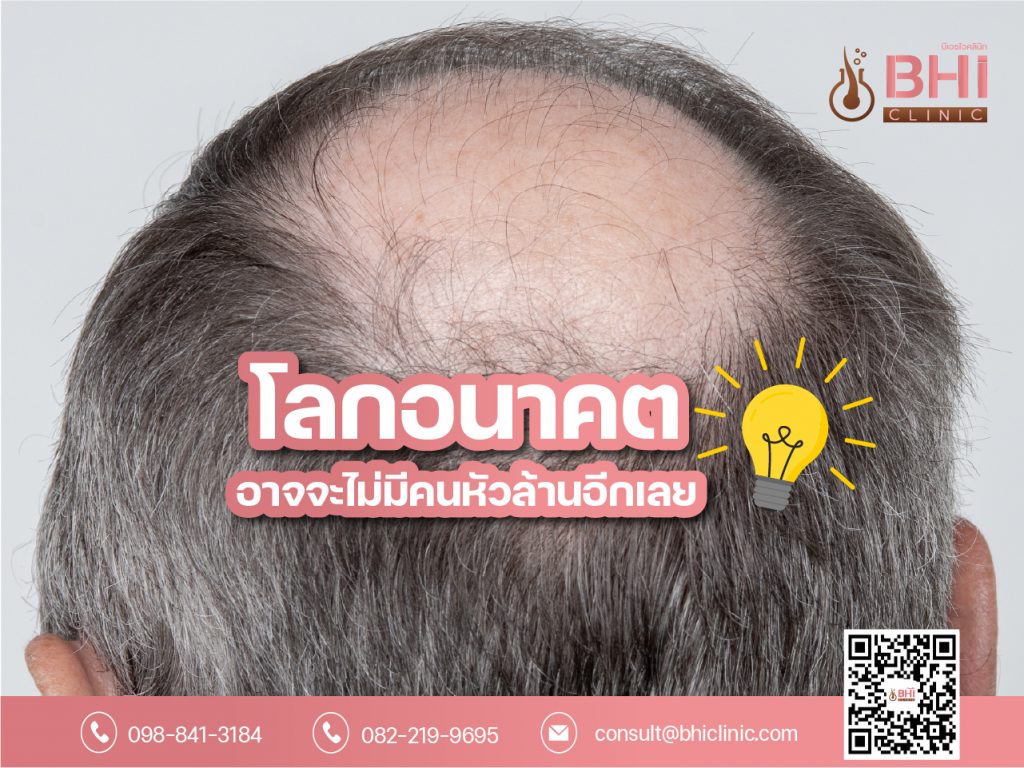ภาวะผมร่วงผมบางศีรษะล้านในปัจจุบัน เรามีความรู้กันอย่างแน่ชัดแล้วว่า ส่วนใหญ่เกิดจากพันธุกรรมที่อ่อนแอของรากผม จะเป็นไปได้มั้ยว่า หากเราตัดยีนที่เป็นสาเหตุของหัวล้านออกไป ลูกหลานในรุ่นถัดๆไปของเรา จะไม่ต้องมีปัญหาผมร่วงศีรษะล้านอีกต่อไป?
ในปี 1998 ดอกเตอร์อังเยลา คริสทีอาโน (Angela Christiano,PhD) ได้รายงานถึงการค้นพบหน่วยพันธุกรรม ที่ชื่อHairless ซึ่งเป็นยีนที่พบเป็นสาเหตุของโรคทางพันธุกรรมที่เกิดกับครอบครัวชาวปากีสถาน โดยพบว่าเด็กที่เกิดในครอบครัวจะมีผมหลุดร่วงไปตั้งแต่ยังทารก และเมื่อร่วงแล้วผมจะไม่ขึ้นอีกเลย ยีนที่ค้นพบนี้อยู่ที่ตำแหน่งโครโมโซม 8p21 (Science, January 30,1998, vol 279, No. 5351)
ปลายปีเดียวกันนั้น ดร.อังเยลาและคณะ ยังรายงานในวารสาร “American Journal of Human Genetics”ตรวจพบสมาชิกของครอบครัวชาวไอริชที่มีอาการเดียวกันคือผมร่วงหายไปตั้งแต่แรกเกิด และพบว่าเป็นการกลายของยีนดังกล่าวเป็นการตอกย้ำถึงความเกี่ยวข้องของยีนนี้ที่มีผลต่อผมร่วงทางพันธุกรรม
ในดีมีเสีย…
ในปี 1998 ดร. อีเลน ฟุช (Elaine Fuchs) ตีพิมพ์ในวารสาร Cell พบว่า โปรตีนชื่อ beta-catenin ที่ผลิตออกมาและสะสมในหนูทดลองที่ทำการดัดแปลงหน่วยพันธุกรรมสามารถกระตุ้นการสร้างของเซลรากผมอย่างล้นหลาม แต่ในภายหลังก็ก่อเป็นมะเร็งในหนูทดลองในเวลาต่อมา
(Fuchs, university of Chicago 1998) (Gat, Dermatology Focus Vol. 19, No. 2, Summer 2000).
ดร. โรนัล คริสตัล (Ronald Crystal,MD) ได้ตีพิมพ์ในวารสาร “The Journal of Clinical Investigation” ในปี 1999 ถึงโปรตีนที่ถูกผลิตโดยการควบคุมของยีนที่ชื่อ Sonic Hedgehog Gene (SHH) ที่จำนวนมากสามารถเปลี่ยนเซลรากผมจากระยะพัก เข้าสู่ระยะเจริญเติบโตได้
จะเห็นว่า การเติบโตและความเสื่อมของรากผมนั้นมีปัจจัยมาจากเรื่องของหน่วยพันธุกรรม (ยีน)ในหลายๆด้าน ทั้งในทางตรง ได้แก่ยีนที่กำหนดการสร้างรากผม กำหนดระยะวงจรชีวิตเส้นผม และทางอ้อม ได้แก่ยีนที่กำหนดการสร้างสารซ่อมแซมและโปรตีนที่เป็นอาหารสำคัญของรากผม ซึ่งนักวิทยาศาสตร์ทางด้านรากผมก็พยายามทำงานอย่างหนักเพื่อที่จะหาโอกาสแก้ไข ในอนาคตอาจมีการใช้เทคโนโลยีการดัดแปลงทางพันธุกรรมเช่น CRISPR เข้ามาช่วยตัดต่อพันธุกรรมที่ทำให้ศีรษะล้านออก จนมนุษย์ในอนาคต อาจไม่ต้องทุกข์ทรมานจากการไม่มีผม (ศีรษะล้าน) อีกเลยก็เป็นได้ อย่างไรก็ตาม ในดีมีเสียในเสียมีดี การตัดต่อพันธุกรรมในมนุษย์อาจนำมาซึ่งภาวะแทรกซ้อนหรือผลเสียต่อชีวิตในระยะยาวอย่างอื่น ซึ่งการติดตามสังเกตการณ์นั้นอาจใช้เวลาชั่วอายุคน ดังนั้นในอนาคตอันสั้นเรามีแนวโน้มจะได้เห็นเพียงการตัดต่อหน่วยพันธุกรรมในสิ่งมีชีวิตขนาดเล็กเช่น ไวรัส หรือ แบคทีเรีย เพื่อใช้ในการสร้างโปรตีนหรือสารอาหารบำรุงรากผมเพื่อช่วยให้รากผมที่เสื่อมถอยกลับมามีชีวิตชีวาอีกครั้ง
The world of the future may not have bald people again?!? : Trends in Gene Modification Therapy or Genetics
Current hair loss, baldness We know for sure that Most of them are caused by weak genetics of hair roots. Is it possible that If we cut out the genes that cause baldness Our next generation Will there be a problem of hair loss, baldness anymore?
In 1998, Dr. Angela Christiano, PhD, reported the discovery of a gene called Hairless, a gene found to cause a genetic disease in Pakistani families. It was found that children born in the family will have hair loss since infancy. and when I fall, I will never rise again. The discovered gene is located at chromosome 8p21 (Science, January 30,1998, vol 279, No. 5351).
at the end of the same year Dr. Angela and team A report in the journal “American Journal of Human Genetics” detects members of an Irish family with the same symptom, hair loss at birth. and found that it was a mutation of the said gene This underscores the relevance of this gene to hereditary hair loss effects.
In good and bad…
In 1998, Dr. Elaine Fuchs published in the journal Cell found that a protein called beta-catenin produced and accumulated in genetically engineered mice can greatly stimulate hair follicle cell formation. But it later caused cancer in lab rats later.
(Fuchs, university of Chicago 1998) (Gat, Dermatology Focus Vol. 19, No. 2, Summer 2000).
Dr. Ronald Crystal, MD, published in the journal “The Journal of Clinical Investigation” in 1999, that proteins produced by the regulation of a large number of Sonic Hedgehog Gene (SHH) genes can change hair follicle cells from rest period enter the growth phase
It can be seen that the growth and deterioration of the hair roots are influenced by the genetic unit. (genes) in many ways, both directly, including genes that determine the formation of hair follicles Determines the life cycle of the hair and indirectly includes the genes that determine the production of repair agents and proteins that are essential food for the hair follicles. The root scientists work hard to find a solution. In the future, genetic modification technologies such as CRISPR may be used to help edit the genetics that cause baldness. until future human beings May not suffer from hairlessness (baldness) again. However, there is good and bad. Genetic editing in humans can lead to complications or other long-term life-threatening consequences. The follow-up can take a lifetime. Therefore, in the short term, we will likely only see genes modified in microscopic organisms such as viruses or bacteria to make proteins or nutrients to repair hair follicles. To help the damaged hair roots come back to life again.




